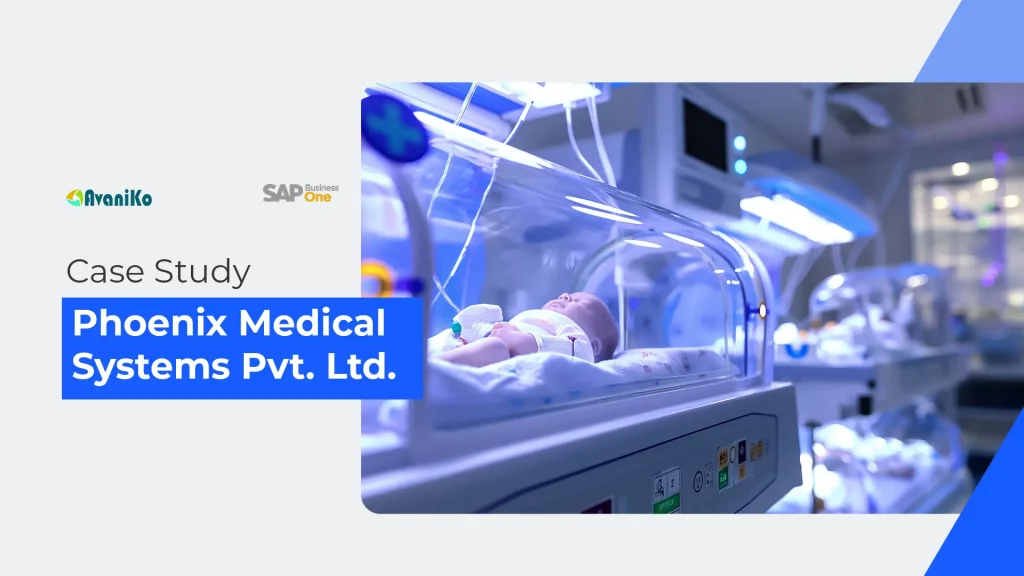Case Study: Phoenix Medical Systems Pvt Ltd

Business Challenges Before
SAP Business One Implementation
Kit Inventory Management: Managing kit inventory on the production floor was complex and inefficient.
BOM Maintenance Limitations: Engineering BOM and Production BOM could not be effectively maintained in the existing system.
Supply Chain Planning Gaps: Poor visibility into transit times and inventory volumes led to planning challenges.
Lack of Asset Control: No functionality for tracking or managing assets in current systems.
System Integration Issues: No integration between existing ERP and the custom-built CRM application, leading to data silos and inefficiencies.
Device History Report: No digital system in place to store or track Device History Records (DHR)
Why SAP & Avaniko
SAP Business One covered 95% of the requirements during the evaluation phase. All the department requirements were demonstrated using the demo of the standard product.
Industry expertise and similar kind of production company implementations gave Avaniko the edge for the selection
After: Connected internal & external teams to make operations efficient
Inventory Control: Enabled complete control over inventory in stores and production (Kit Item Management) & Improved accuracy and efficiency in stock handling.
Scalable Digital Core: Supports company expansion plans. & Seamless future integration with third-party applications.
Workflow & Approvals: Streamlined workflow approvals across documents. & Enhanced control over financial and operational processes.
Unified Platform: Closed inter-departmental gaps.
The SAP Business One platform was replaced by a single, integrated system.
After-Sales Service Efficiency: Improved integration with third-party after-sales service applications.
Enabled seamless and efficient post-sales support.
Web-based Device History Record (DHR): Tracks every component, process step, operator, and machine involved from start to finish.